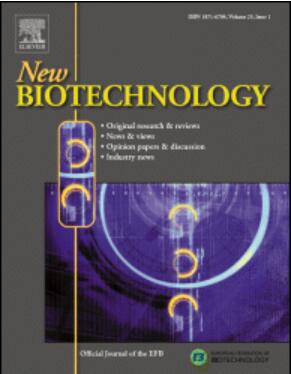A distinct autofluorescence distribution pattern marks enzymatic deconstruction of plant cell wall
IF 4.9
2区 生物学
Q1 BIOCHEMICAL RESEARCH METHODS
引用次数: 0
Abstract
Achieving an economically viable transformation of plant cell walls into bioproducts requires a comprehensive understanding of enzymatic deconstruction. Microscale quantitative analysis offers a relevant approach to enhance our understanding of cell wall hydrolysis, but becomes challenging under high deconstruction conditions. This study comprehensively addresses the challenges of quantifying the impact of extensive enzymatic deconstruction on plant cell wall at microscale. Investigation of highly deconstructed spruce wood provided spatial profiles of cell walls during hydrolysis with remarkable precision. A distinct cell wall autofluorescence distribution pattern marking enzymatic hydrolysis along with an asynchronous impact of hydrolysis on cell wall structure, with cell wall volume reduction preceding cell wall accessible surface area decrease, were revealed. This study provides novel insights into enzymatic deconstruction of cell wall at under-investigated cell scale, and a robust computational pipeline applicable to diverse biomass species and pretreatment types for assessing hydrolysis impact and efficiency.
一种独特的自身荧光分布模式标志着酶解植物细胞壁。
要将植物细胞壁转化为经济上可行的生物产品,就必须全面了解酶解过程。微尺度定量分析为加深我们对细胞壁水解的了解提供了一种相关方法,但在高解构条件下却变得具有挑战性。本研究全面解决了在微观尺度上量化大量酶解对植物细胞壁影响的难题。对高度解构云杉木材的研究提供了水解过程中细胞壁的空间轮廓,精确度极高。研究发现,在酶水解过程中,细胞壁自发荧光的分布模式与水解对细胞壁结构的影响不同步,细胞壁体积的减少先于细胞壁可触及表面积的减少。这项研究为研究不足的细胞尺度的细胞壁酶解提供了新的见解,并为评估水解影响和效率提供了适用于不同生物质种类和预处理类型的强大计算管道。
本文章由计算机程序翻译,如有差异,请以英文原文为准。
求助全文
约1分钟内获得全文
求助全文
来源期刊

New biotechnology
生物-生化研究方法
CiteScore
11.40
自引率
1.90%
发文量
77
审稿时长
1 months
期刊介绍:
New Biotechnology is the official journal of the European Federation of Biotechnology (EFB) and is published bimonthly. It covers both the science of biotechnology and its surrounding political, business and financial milieu. The journal publishes peer-reviewed basic research papers, authoritative reviews, feature articles and opinions in all areas of biotechnology. It reflects the full diversity of current biotechnology science, particularly those advances in research and practice that open opportunities for exploitation of knowledge, commercially or otherwise, together with news, discussion and comment on broader issues of general interest and concern. The outlook is fully international.
The scope of the journal includes the research, industrial and commercial aspects of biotechnology, in areas such as: Healthcare and Pharmaceuticals; Food and Agriculture; Biofuels; Genetic Engineering and Molecular Biology; Genomics and Synthetic Biology; Nanotechnology; Environment and Biodiversity; Biocatalysis; Bioremediation; Process engineering.
 求助内容:
求助内容: 应助结果提醒方式:
应助结果提醒方式:


